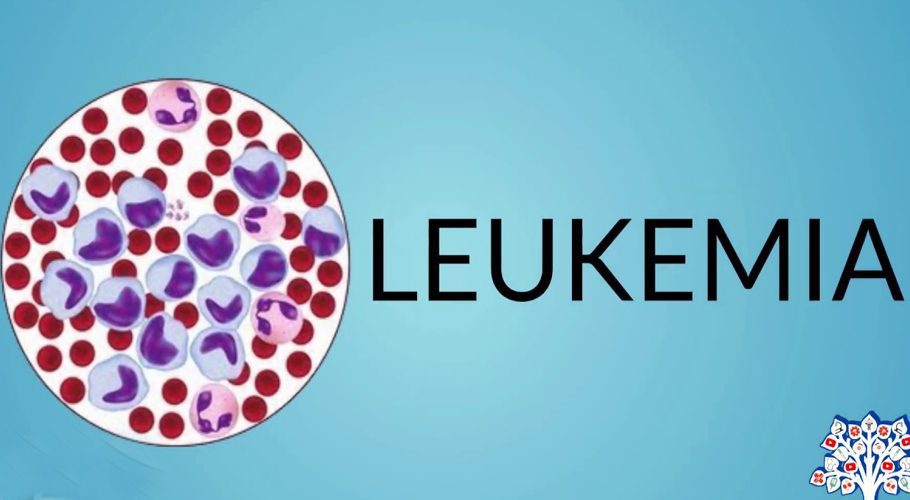Leukemia is a cancer of the blood or bone marrow, which produces blood cells. Leukemia happens when there is a problem with blood cell production. It usually affects the leukocytes, or white blood cells, making it harder for a body’s immune system to fight infection.
Leukemia more often affects people aged over 55 years, but it is also the most common cancer in those aged under 15 years.
There are different types of leukemia, and the outlook depends on the type. Acute leukemia develops quickly and worsens rapidly, but chronic leukemia gets worse over time.
Signs of leukemia include:
- Having a fever, chills, body aches and other flu-like symptoms
- Excessive tiredness and weakness
- Loss of appetite
- Recurrent infections
- Easy bleeding, bruising and nosebleeds
- Swollen lymph nodes
- Unexplained weight loss
Many people wonder what causes leukemia. While extensive studies are underway, researchers have not yet identified the precise causes of the condition.
How does leukemia form?
Some scientists believe that leukemia results from an as-of-yet undetermined combination of genetic and environmental factors that can lead to mutations in the cells that make up the bone marrow. These mutations, known as leukemic changes, cause the cells to grow and divide very rapidly. The resulting unhealthy cells can outnumber the healthy white blood cells, red blood cells and platelets within the body, rendering the blood less effective at doing its job. Because of this, a leukemia patient might bleed, bruise or become fatigued very easily, and also might be highly susceptible to infection.
Types of leukemia
Leukemia is broadly categorized as acute or chronic. Acute leukemias are more aggressive and involve immature blood cells, whereas chronic leukemias tend to develop more slowly and involve mature blood cells. Leukemia is further classified by the type of cells that are affected, with the four main types being:
Acute lymphocytic leukemia (ALL)
Acute myelogenous leukemia (AML)
Chronic lymphocytic leukemia (CLL)
Chronic myelogenous leukemia (CML)
Risk factors that can cause leukemia
While the exact cause of leukemia—or any cancer, for that matter—is unknown, there are several risk factors that have been identified, such as radiation exposure, previous cancer treatment and being over the age of 65. With regard to the specific genetic and environmental factors that are thought to be linked to leukemia, and what causes bone marrow cells to mutate, researchers are evaluating certain combinations of:
- A genetic predisposition
- Down syndrome
- Human T-lymphotropic virus (HTLV)
- Human immunodeficiency virus (HIV)
- Exposure to petrochemicals, such as benzene
- Extensive exposure to artificial ionizing radiation
- Alkylating chemotherapy agents administered to treat other types of cancer
- Tobacco use
- Use of certain hair dyes
Researchers have further identified which risk factors may cause different types of leukemia. For example:
Risk factors for acute myeloid leukemia include smoking, exposure to high doses of radiation, certain blood disorders and certain genetic disorders
Risk factors for acute lymphocytic leukemia include having certain viral infections (such as Epstein-Barr) or genetic disorders (such as Down syndrome) as well as prior exposure to high doses of radiation or benzene
Risk factors for chronic lymphocytic leukemia include a family history of this cancer or exposure to Agent Orange (a tactical herbicide)
No risk factors have yet been identified for chronic myeloid leukemia, although an exposure to certain chemicals, a family history of leukemia, race and age may play a part.
Who is most at risk for developing leukemia?
While scientists have been working hard to better understand the risk factors of leukemia—as noted above—there is no singular predictor that someone will get this cancer. Some people with multiple risk factors may never develop leukemia while those with no known risk factors may be diagnosed with it in their lifetime. Risk factors are simply a measuring stick that help scientists understand what genetic and environmental factors may increase a person’s likelihood of developing a certain health condition, like cancer.
What causes childhood leukemia?
Leukemia is the most common type of cancer diagnosed among children and adolescents younger than 20 years old, accounting for 25% of all cancer cases for this demographic. But it’s still unknown what exactly causes children to develop leukemia at such a high rate, as most children diagnosed with this cancer have no known risk factors. Children with Down syndrome or Li-Fraumeni syndrome are more at risk for developing leukemia as well as those who have a sibling with leukemia (although the overall risk is very low). Certain inherited immune system conditions—Ataxia-telagiectasia, Wiskott-Aldrich syndrome, Bloom syndrome and Shwachman-Diamond syndrome—can also increase a child’s risk of leukemia.
Can leukemia be cured?
While there is no cure for leukemia at this point in time, and the cancer can still recur, patients can reach a state of remission (in which there are no longer any signs or symptoms of cancer). These days, there are a range of advanced treatment options available for leukemia patients to achieve remission without recurrence, including:
- Chemotherapy
- Radiation therapy
- Bone marrow transplants
- Monoclonal antibody therapy
- Immunotherapy
- Clinical trials
What is the survival rate for leukemia?
Overall, a person with leukemia has a 65.7%Trusted Source chance of surviving at least another 5 years after diagnosis, according to figures from 2012–2018. For children, the rate is nearly 86%Trusted Source. However, the rate will vary widely, depending on the type. Children with ALL have a 90%Trusted Source chance of surviving at least another 5 years.



































